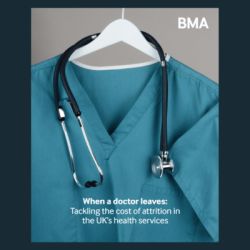iPads will be provided to ambulance crews across England to ensure that patients get the right care faster, the NHS brass has announced.
Ambulance crews will utilise the 30,000 iPads to send photographs from the scene of an incident, so specialists on standby at hospital can initiate treatment right away when the patient arrives in the emergency department. These iPads will also allow paramedics to access vital health records and help them better assess patients’ injuries and decide the course of action. Once the decision is made to bring the patient to the ED, information on the patient can also be sent ahead to speed up handovers and free ambulances to quickly attend their next call.
You might also like: 2020 proved to be the record year for digital health venture investment, but not for long. Q1 2021 became the largest quarter of digital health-related funding ever, with investment reaching almost €6 billion.Learn more.
NHS Chief Executive Sir Simon Stevens announced the initiative at an Ambulance Leadership Forum. “Ambulance crews have been at the forefront of the pandemic, routinely dealing with life and death situations and often first on scene to treat and diagnose critically ill patients.” Sir Simon said. “It is another example of the health service innovating and harnessing technology to improve patient care as part of the NHS Long Term Plan.”
This initiative from the NHS Long Term Plan is funded through NHSX, a joint unit of NHS England and the Department of Health and Social Care, supporting local NHS and care organisations to digitise their services and connect the health and social care systems through technology.
Early pilot results from ambulance crews in London and the South East using iPads show how effective having access to vital information or specialist medical advice can be on emergency calls. The devices have been used by South East Coast Ambulance to video call consultants when attending stroke patients, providing faster and more specialised care in the critical period before they reach hospital.
“These devices have not only empowered our staff when making their clinical decisions, but have also helped treat patients quicker, while reducing the number of unnecessary trips to hospital.”
Minister for Health Edward Argar said: “Investing in these devices will help the NHS to build back better by ensuring patients and staff are benefitting from the latest technology, and is part of our commitment through the NHS Long Term Plan to improve care for the future.”
The success of pilot projects in London and the South East, have paved the way for a nationwide rollout of devices through eight English ambulance trusts.
Source: NHS
Photo: iStock


























